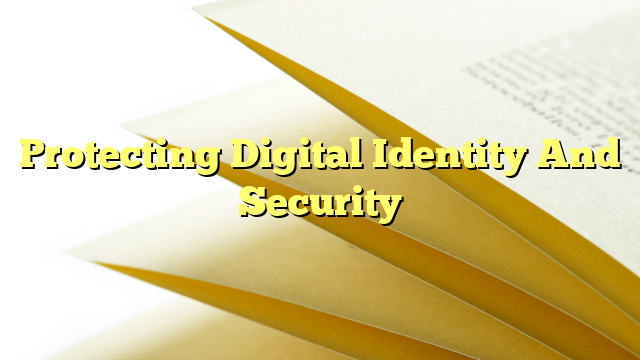Protecting Digital Identity and Security
Table of Contents
- What is Digital Identity and Security?
- Why is it Important to Protect Your Digital Identity?
- What Can You Do to Protect Your Digital Identity?
- Four Steps in Managing Digital Identities
What is Digital Identity and Security?
Digital identity and security is the protection of your personal data, online activities, and identity when using the internet. It is important to understand the potential risks involved in the digital world and how to protect yourself from them. Information stored online is vulnerable to theft, meaning you could be at risk of having your identity stolen or your data breached. That’s why it is important to take proactive steps to protect yourself and your information.
Digital identity and security is a broad field that includes topics such as online privacy, data protection, cybercrime, and digital rights. It covers topics such as encryption, authentication, and access control, as well as other strategies for protecting online information.
Why is it Important to Protect Your Digital Identity?
Protecting your digital identity is important because it gives you control over who has access to your personal information and online activities. When your digital identity is secure, you protect yourself from identity theft, online scams, and other malicious activity.
Your digital identity is made up of your online activities, including the websites you visit, the emails you send, the posts you make, and the information you give away. This information is vulnerable to theft and can be used by someone else to gain access to your accounts and systems.
By taking steps to protect your digital identity, you can better protect your personal information and online activities from unauthorized access.
What Can You Do to Protect Your Digital Identity?
There are several steps you can take to protect your digital identity. These include:
- Creating strong passwords for online accounts and changing them regularly.
- Using two-factor authentication for extra security.
- Using encryption to protect data.
- Avoiding public Wi-Fi networks.
- Using a Virtual Private Network (VPN) to protect your data when browsing the web.
- Limiting the amount of personal information you share online.
- Avoiding suspicious links and emails.
- Ensuring your devices and software are up to date with the latest security patches.
Four Steps in Managing Digital Identities
Managing your digital identities is important for protecting your online security. Here are four steps to manage your digital identities:
- Know your online accounts and services. Take stock of all the accounts and services you use online and ensure that you have up-to-date information and passwords for each one.
- Stay on top of your security settings. Make sure that your security settings are up to date and that you are aware of any changes that may have been made.
- Monitor your accounts and services. Monitor your accounts and services regularly for suspicious activity and update your passwords regularly.
- Be aware of phishing attempts. Be aware of phishing attempts and be wary of any emails, text messages, or calls that appear to be from a legitimate source, but are actually malicious in nature.
Protecting your digital identity and security is important in order to keep your personal data and online activities safe. By taking proactive steps to protect your digital identity, you can better protect yourself from becoming a victim of identity theft, online scams, and other malicious activity.


Digital security is essential. Protect it!